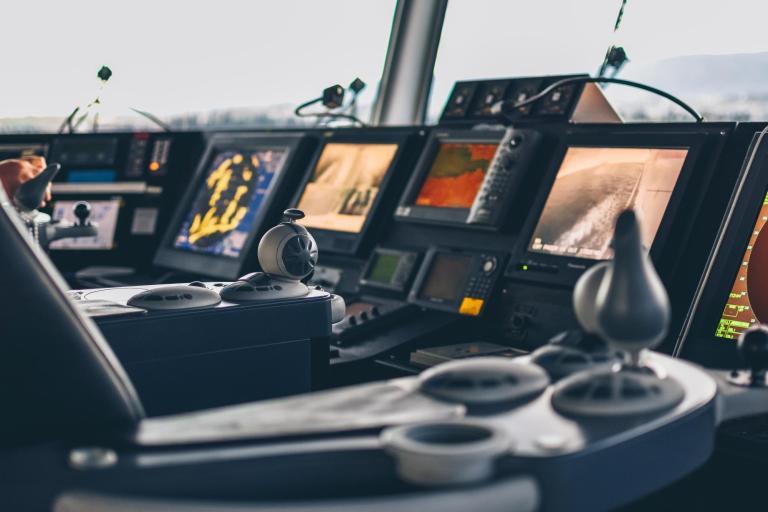NAVISP-EL1-055
One of the many new emerging concepts having the potential to address present and future maritime challenges is autonomous ship navigation. In particular, the concept is expected to allow for more efficient and competitive ship operations while reducing, at the same time, vessels’ environmental impact.
Several activities have been initiated in the recent years with the aim to jumpstart the concept of autonomous shipping. The EC project MUNIN (Maritime Unmanned Navigation through Intelligence in Networks) aims at developing and verifying a concept for an autonomous ship. The AAWA project was started to develop specifications and possible design for the next generation autonomous ships. AUTOSEA is a collaboration to develop technology and knowledge for automated situational awareness for ships. All these projects and others have been looking at the concepts or technologies needed for autonomous shipping to become a reality.
On ESA side, several exploratory activities have been launched with relevance to autonomous vessels. The GSP activity MAGS [RD 1] (Maritime Adaptive GNSS Safety Concept) has studied a novel safety concept to be used in the vicinity of ports, which makes use of an Adaptive Alert Limit (AAL) by creating a centralized port monitoring and processing function for all vessels in port waters, instead of using a fixed Alert Limit (AL). Moreover, one of the key aspects of the MAGS concept is the consideration of the vessel not as a single point but as a full 3D body, considering both position and attitude, taking into account the real ship contour and defining a marine vessel protection area (MVPA).
Two parallel NAVISP contracts (Artificial Intelligence / Machine Learning Sensor Fusion for Autonomous Vessel Navigation) are studying the usage of these techniques applied to specific autonomous operations (port approach, auto-docking and others). In particular, different configurations of Position, Navigation and Timing (PNT) sensors are being investigated (GNSS plus vision, infrared, LIDAR, depth sensors) in combination with AI techniques to improve performance and resilience of maritime PNT solutions. Moreover, other ESA activities have studied the maritime multipath environment (e.g. MARGOT [RD 3]) and the results can be leveraged to propose better optimized antena systems including the possibility of multi-antennas or adaptive ones for multipath mitigation and attitude determination.
While these activities are providing great steps in the direction towards autonomous vessels, they are looking into enabling building blocks and not yet a complete integration. The proposed activity is a proof-of-concept, testing these methods and techniques in real scenarios in order to bring the PNT technology forward. Focusing also on attitude determination and control will allow testing a comprehensive set of solutions, techniques and technologies for autonomous operations in different scenarios.
The objectives of the proposed activity is to develop and demonstrate alternative PNT concepts for the ship positioning/attitude determination in the port environment and the assessment of the achievable level of performance.
The objective includes the definition of the attitude control based on several configurations of actuators and sensors related to different classes of vessels (e.g. ferries, tankers, containers, fishing vessels, tugs, etc…) and several GNSS receiving (adaptive) on-board antennas combination (e.g. AI-NAV). For the demonstration of the PNT concepts, development of a proof-of-concept prototype receiver, from here on referred as Maritime Autonomous PNT Prototype (MAPP), and testing in the port environment is necessary.
The activity will include different tasks covering: the analysis of the performance requirements applicable to autonomous navigation of vessels in the port environment, including attitude determination; assessment of the PNT concept performance level, including accurate and reliable attitude determination, considering GNSS with sensor fusión (e.g. IMU and other typical on board a ship); proposal of alternative PNT concepts potentially based on the use of multiple GNSS receiving antennas (including adaptive antennas and potentially distributed over the vessel) and sensors (e.g. AI-NAV) on board to help the determination of the ship’s attitude and in new integrity concepts (e.g. MAGS [RD 1]); development of the MAPP receiver with all above considerations to be tested in the port
environment.
The results of the activity will help provide several alternative PNT concepts and technical solutions for present and future autonomous maritime vessels with the development of the MAPP receiver based on COTS elements. The testing of the methods and techniques identified in selected maritime operational scenarios will demonstrate the feasibility of the PNT concepts considered.
Link with CMA Goals
Goal II: A competitive, innovative and sustainable blue economy for the Black Sea / Priority 2: Promote transport and digital connectivity of the Black Sea

